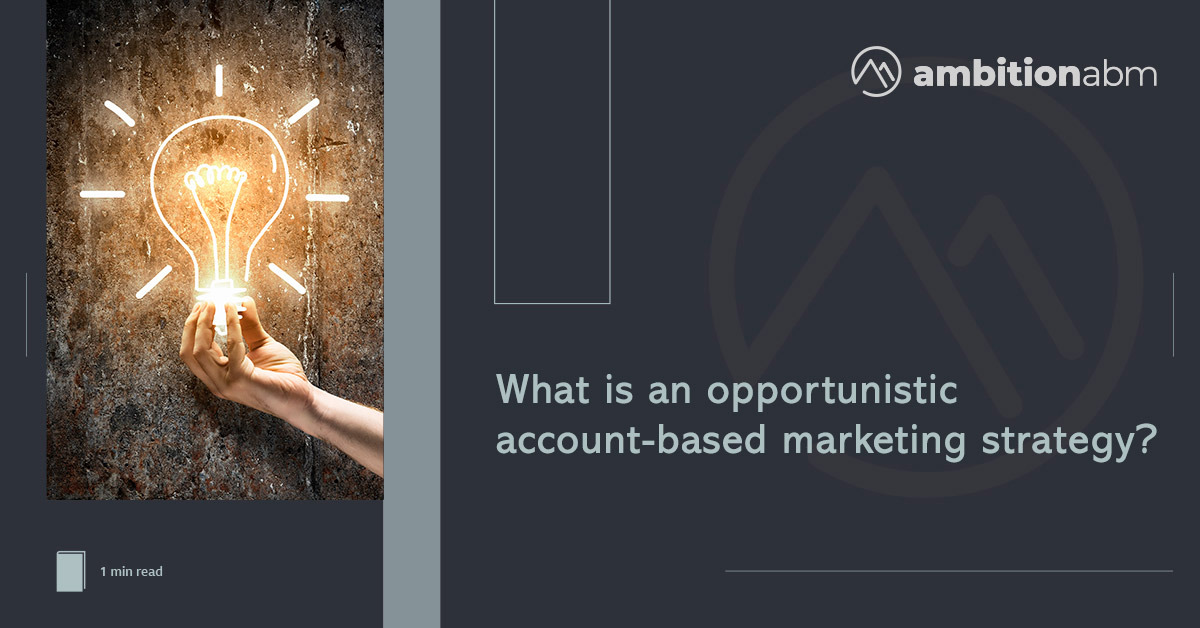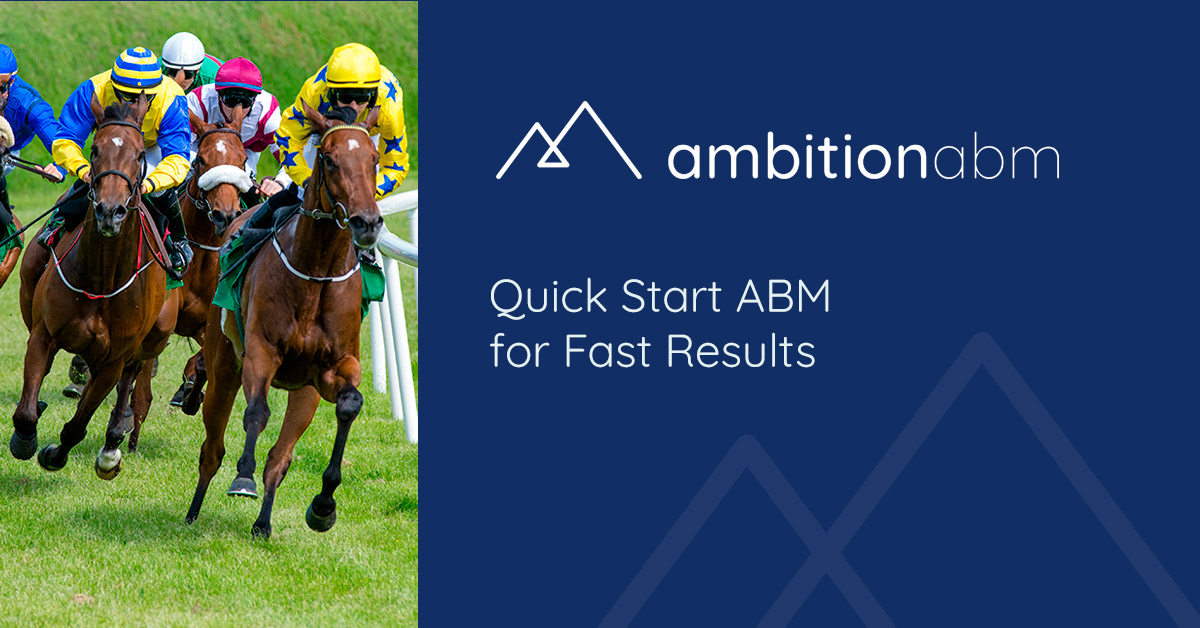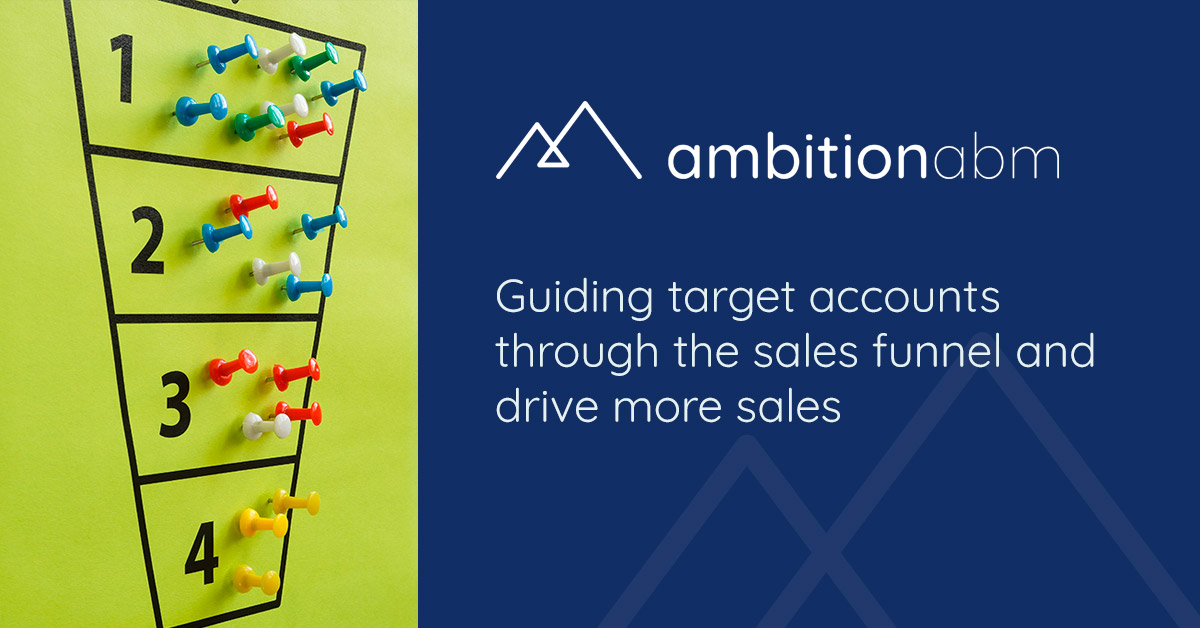For marketers, the digital era has meant the potential audience and customer-base is global and there has been for some time a temptation to cast the biggest marketing net over the widest area possible. Sales and marketing became a high-volume business, a high-volume low return business. An account-based marketing (ABM) strategy on the other hand is like fishing with a spear: highly targeted.
However, choosing the right accounts can be tough and for ABM marketers it is one of the most difficult and important decisions you will make!
Marketing and sales organisations can find themselves at odds when enacting an ABM strategy. This happens when instead of using a deliberate, cross-functional approach to choose target accounts, ABM marketers rely on a large list of accounts that meets the ideal customer profile on paper, but in reality, it is a list full of cold accounts that aren’t ready to buy.
This is called opportunistic ABM and could be compared to spear fishing in a school of fish — your focus is more targeted than casting a net, but you still might not end up with what you want. On the other hand, an ABM strategy means targeting fewer accounts that are predetermined to be a good fit.
While these two different ABM types can and do work together, it’s important for any organisation trying to win with a B2B ABM strategy to know the difference between opportunistic and strategic ABM. Here’s how to tell the difference, and a few tips for adjusting your strategy if needed.
Opportunistic ABM: What are the Pros & Cons?
ABM delivers greater success as we all know. The 2020 Gartner Technology Marketing Benchmark Survey, observed increases in key marketing and sales areas after implementing ABM. Marketing saw improved conversion rates throughout the funnel, increased web traffic, and improved advertising and email performance. Sales saw higher win rates, faster sales cycles, and increased deal sizes.
Gartner estimates 70% of B2B marketers at all midsize to large organisations will have launched either a pilot or full-scale ABM program to target and engage buyers. But how many of these ABM programs are using an opportunistic strategy as opposed to a strategic one, or are they using a mix?
Opportunistic ABM strategy leverages a combination of digital marketing and intent monitoring to gauge whether or not an opportunistic account transitions from out of market to in-market. When it does, the opportunistic account then moves to a strategic account in order to move the needle further.
Opportunistic ABM involves less resources and time, increased digital marketing touch-points, and may be defined as a middle ABM approach before accounts shift to strategic ABM. The main driver here is intent. Opportunistic strategy monitors intent while strategic ABM already knows it. This can be a worthwhile strategy for some, but it’s often a diluted version of true strategic ABM — costing the same time, money, and resources for a smaller ROI.
Strategic ABM: What are the Pros & Cons?
Strategic ABM, is about selecting the right accounts from the beginning — accounts that provide a 12-24 month growth potential, scope to cross-sell and up-sell and that have an opportunity to sell to the account with ‘one strategic voice’. Strategic ABM focuses time and resources on deliberate, coordinated activities designed to make inroads and create opportunities with potential customers.
In other words, it all comes down to account selection — possibly the most important part of any ABM strategy.
“Get account selection wrong and there is no engagement strategy, content or tactic that will right the wrong, often leading to a poor experience for the target customer, your sales team and you,” writes Stephanie McCredie, Senior Director ABM at Salesforce. “On the other hand, the right accounts matched with personalized messaging and touchpoints will lead to better engagement, faster deal velocity and larger deals.”
Strategic ABM comprises measuring different metrics. Instead of focusing on unearthing intent, strategic ABM is about delivering the right tailored experience in order to influence action. Indeed, real-time buyer enablement within ABM depends on understanding your buyer (and buyer groups) completely. Instead of driving clicks, ABM marketers with a strategic mindset focus on capturing and defining the most relevant signals that determine buyer behaviour and activity. That way, ABM can work as it was truly meant to — leading customer groups down a personalised journey and into the sales funnel.
Making Opportunistic ABM & Strategic ABM Work Together
Making opportunistic and strategic ABM work together is about determining a way to move accounts in and out of the higher-touch treatment reserved for strategic plays. You may have a very large list of target accounts that meet your ideal customer profile, but it isn’t reasonable to spend the same amount of money, time, and resources on all of them.
Gartner recommends these three steps:
- Formalise your account selection process. This means identifying which accounts are warm and cold and making sure your pool of candidates is the right fit from the start. Remember: A broad list is an opportunistic strategy; a tailored one is true strategic ABM.
- Coordinate across teams to create a pipeline strategy. Both sales and marketing should give input on when and how to engage accounts, as well as determine when accounts progress down the sales funnel.
- Use the right tech to track and analyse your work. ABM is about delivering the right message at the right moment, and less about measuring intent (but you already knew that). Monitoring the right engagement metrics will require third-party tools and data, and a feasible way to interpret that data.
ABM is not a one-size-fits-all strategy, there are different campaign strategies to use for certain groups of customers. An ABM approach that tries to reach all potential buyers is just opportunistic. An ABM strategy that doubles down on the right customer group is truly strategic.
AmbitionABM help companies take a strategic approach to ABM with a proven methodology with a five-stage process to select and verify target accounts, discovery, strategy and message proposition development, content creation, execution and engagement. Learn more about our ABM offerings here.











